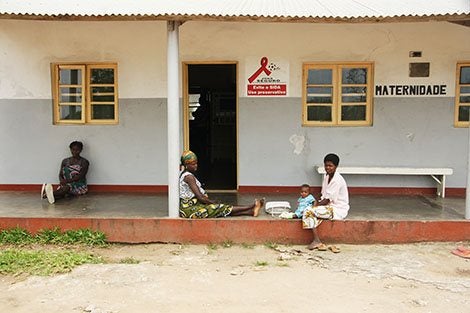Study calls into question recent global efforts to reduce maternal and infant deaths by urging women to deliver babies at local primary care facilities
For immediate release: Friday, September 23, 2016
Boston, MA – More than 40% of health facility births in five African countries are taking place in poor-quality facilities with crucial deficiencies in staffing, infrastructure, referral systems, and routine and emergency care practices, according to a new study from Harvard T.H. Chan School of Public Health.
The study will appear online Friday, September 23, 2016 in Lancet Global Health.
“Our findings suggest that the current strategy of ‘birth at any clinic’ is likely wrong, and that poor quality is undermining the goal of reducing maternal and newborn mortality around the world,” said Margaret Kruk, associate professor of global health at Harvard Chan School and lead author of the study.
Since 2000, when world leaders established eight “Millennium Development Goals” (MDGs) at a United Nations Summit—one of which was to improve maternal health and another to reduce child mortality—low-income countries with high maternal mortality rates have been encouraging women to give birth in nearby health facilities rather than at home. The thinking was that giving birth in a health facility designated to handle deliveries would save women’s and newborns’ lives because birth complications are unpredictable. In practice, many delivery facilities are small primary care clinics offering only basic services.
But preliminary evidence from countries that have dramatically increased facility deliveries, such as India, has suggested that this has not led to reduced maternal and infant mortality. Other evidence, from high-income countries, has suggested that facilities that handle a high volume of births (e.g., more than 500 a year) and that have the capacity to perform cesareans have the highest quality of neonatal and obstetric care.
Given that there is little information available about the quality of primary care facilities in low-income countries, the researchers decided to analyze data from health system surveys funded by USAID about deliveries and quality of care in five sub-Saharan African countries with high maternal mortality—Kenya, Namibia, Rwanda, Tanzania, and Uganda. They measured the quality of basic maternal care functions at 1,715 health care facilities using an index of 12 indicators, including the availability of skilled providers, a functional ambulance, electricity, clean water, and antibiotics. They also looked at whether quality was linked to volume of births per year or to a facility’s capacity to perform cesareans.
They found that nearly 90% of the facilities studied did not have the capacity to perform cesarean sections, and that those clinics delivered 44% of all babies born in a health care facility. Small primary care clinics scored, on average, only 3.8 out of 10 on a basic index of quality; facilities with surgical capability had nearly double this score.
“As we have already done in wealthy countries, we need to get women in countries in sub-Saharan Africa, and in other countries with high rates of maternal and neonatal mortality, into larger, better health care facilities to deliver their babies,” said Kruk. “Governments in lower-income countries and their global partners need to urgently pivot from promoting access alone to improving quality of care for childbirth.”
Other Harvard Chan researchers involved in the study included research fellow Hannah Leslie; Stéphane Verguet, assistant professor of global health; and senior author Ana Langer, professor of the practice of public health and coordinator of the Dean’s Special Initiative on Women and Health.
“Assessment of quality of basic maternal care functions in health facilities with national health-system surveys of five African countries: a prospective analysis,” Margaret E. Kruk, Hannah H. Leslie, Stéphane Verguet, Godfrey M. Mbaruku, Richard M.K. Adanu, and Ana Langer, Lancet Global Health, doi: 10.1016/S2214-109X(16)30180-2
Visit the Harvard Chan School website for the latest news, press releases, and multimedia offerings.
For more information:
Marge Dwyer
mhdwyer@hsph.harvard.edu
617.432.8416
photo: © 2011 Arturo Sanabria, Courtesy of Photoshare
###
Harvard T.H. Chan School of Public Health brings together dedicated experts from many disciplines to educate new generations of global health leaders and produce powerful ideas that improve the lives and health of people everywhere. As a community of leading scientists, educators, and students, we work together to take innovative ideas from the laboratory to people’s lives—not only making scientific breakthroughs, but also working to change individual behaviors, public policies, and health care practices. Each year, more than 400 faculty members at Harvard Chan School teach 1,000-plus full-time students from around the world and train thousands more through online and executive education courses. Founded in 1913 as the Harvard-MIT School of Health Officers, the School is recognized as America’s oldest professional training program in public health.
